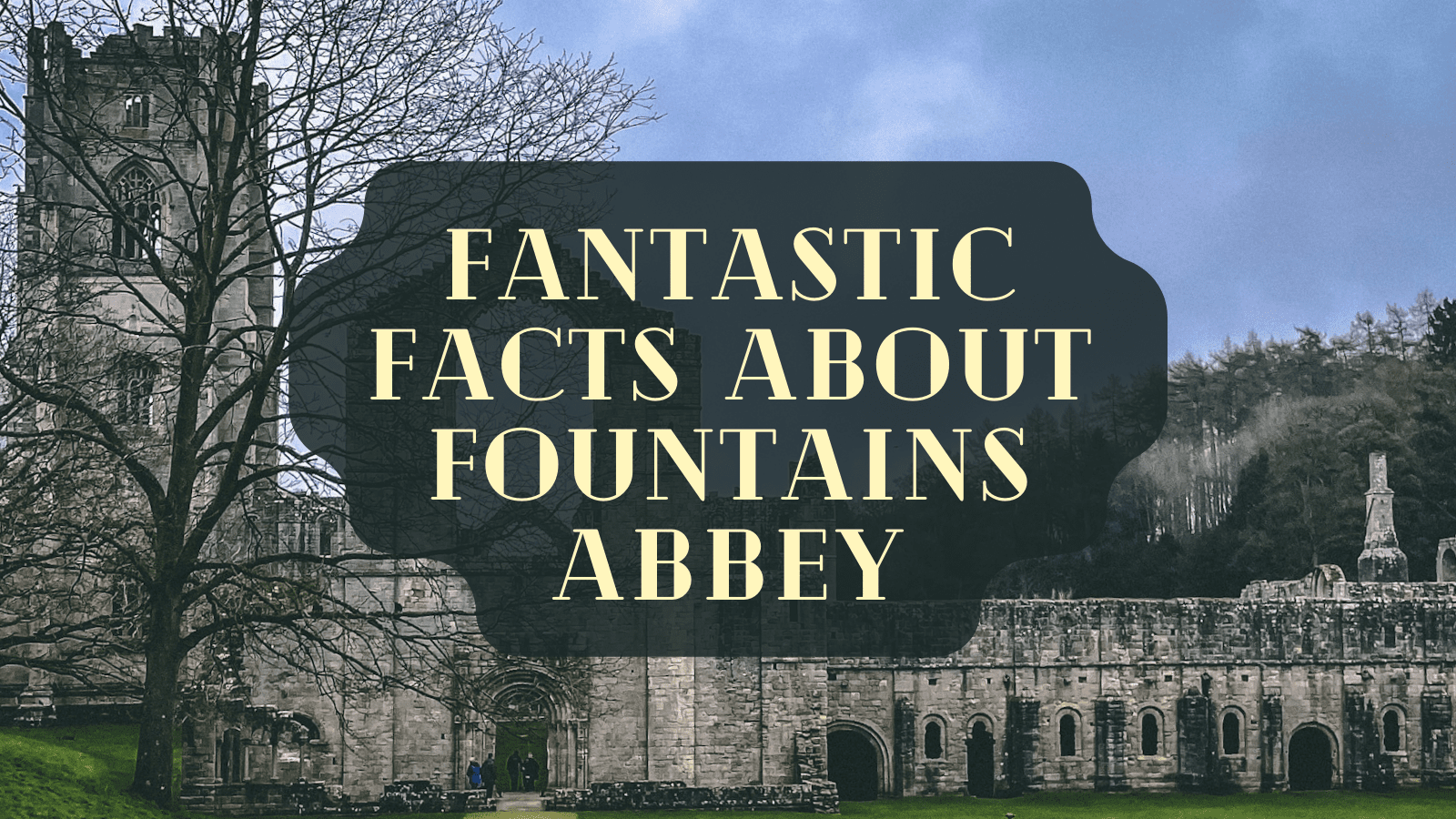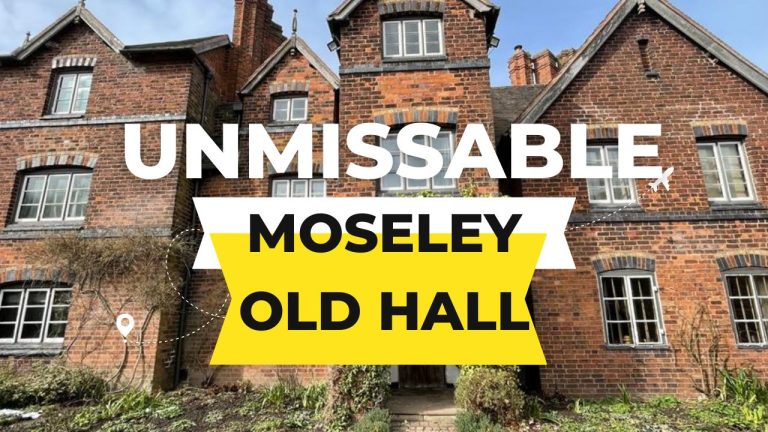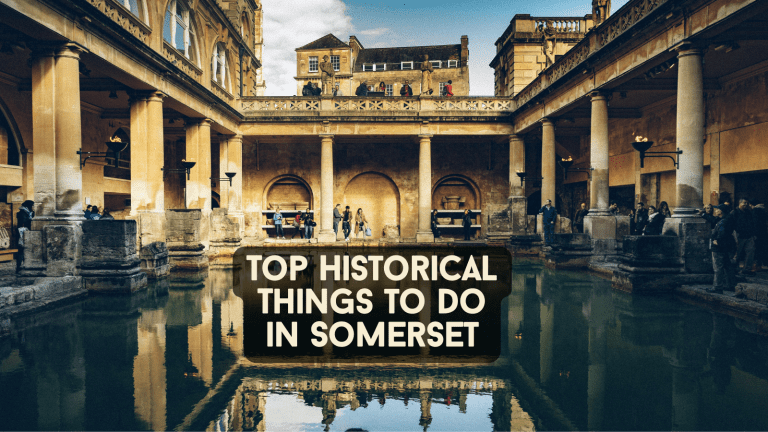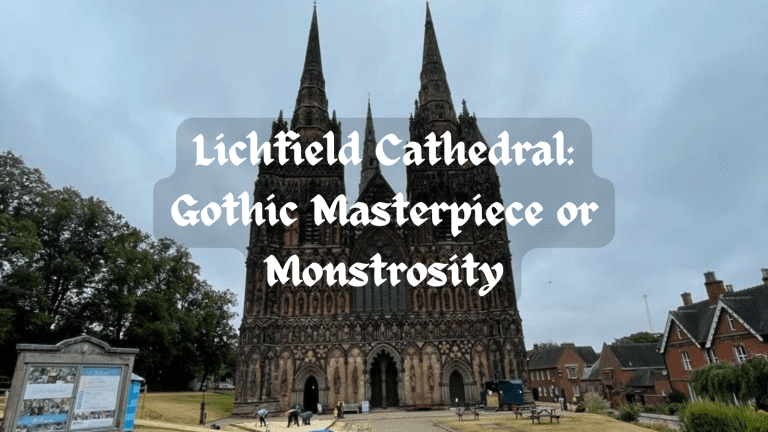Fantastic Facts About Fountains Abbey
On first sighting, the abbey ruins at Fountains are quite dramatic. These are Britain’s largest monastic ruins, and it has a story just as dramatic.
Back in 1132, thirteen Benedictine monks left their home in St Mary’s in York having become more than fed up with the extravagant and disorderly life there. They went in search of a devout and simple lifestyle elsewhere and found it in Fountains. Within just three years, they were all well ensconced in their new way of life and had been admitted to the austere Cistercian Order. The Order introduced the Cistercian system of lay brothers which entailed labourers (lay brothers) who carried out all routine jobs, freeing the monks to commit more time to God. Thanks to the hard work of the lay brothers, wool production, stone quarrying, lead mining, and cattle and horse breeding saw Fountains become impressively wealthy.
[/et_pb_text][/et_pb_column][/et_pb_row][et_pb_row _builder_version=”4.15.0″ _module_preset=”default” column_structure=”1_5,3_5,1_5″][et_pb_column _builder_version=”4.15.0″ _module_preset=”default” type=”1_5″][/et_pb_column][et_pb_column _builder_version=”4.15.0″ _module_preset=”default” type=”3_5″][et_pb_image src=”http://historywithhenry.com/wp-content/uploads/2022/04/1.jpg” _builder_version=”4.15.0″ _module_preset=”default” alt=”Fountains Abbey” title_text=”1″ hover_enabled=”0″ sticky_enabled=”0″][/et_pb_image][/et_pb_column][et_pb_column _builder_version=”4.15.0″ _module_preset=”default” type=”1_5″][/et_pb_column][/et_pb_row][et_pb_row _builder_version=”4.15.0″ _module_preset=”default” global_colors_info=”{}”][et_pb_column type=”4_4″ _builder_version=”4.15.0″ _module_preset=”default” global_colors_info=”{}”][et_pb_text _builder_version=”4.15.0″ _module_preset=”default” global_colors_info=”{}”]Originally, the abbey church was constructed simply of wood and is imagined to have been two storeys high. The impressive buildings of this abbey developed over time on the 70 acres (28 ha) of precinct protected by the 11-foot (3.4 m) wall that was built in the 13th century. Parts of this wall can still be seen to both the south and west of the abbey. Three concentric zones exist, cut from west to east across the site by the River Skell. In the middle of the precinct to the north of the Skell lies the church and claustral buildings. The inner court housing the domestic buildings extends down to the river with the industrial and agricultural buildings within the outer court on the river’s south bank. The cloister in the centre of the precinct boasts black marble arcading and white sandstone. The eastern walk of the cloister opens onto the three-aisled chapter-house and parlour with the monks’ dormitory above. Alongside the cloister are the warming house with muniment room above, the refectory, and the kitchens. The cellarium is an immense, vaulted substructure divided into sections that serve as cellars and storerooms. The refectory of the lay brothers sits at its southern end beside the kitchens with their dormitory above. The latrines are located in the section built over the river.
[/et_pb_text][/et_pb_column][/et_pb_row][et_pb_row _builder_version=”4.15.0″ _module_preset=”default” column_structure=”1_5,3_5,1_5″][et_pb_column _builder_version=”4.15.0″ _module_preset=”default” type=”1_5″][/et_pb_column][et_pb_column _builder_version=”4.15.0″ _module_preset=”default” type=”3_5″][et_pb_image src=”http://historywithhenry.com/wp-content/uploads/2022/04/10.jpg” _builder_version=”4.15.0″ _module_preset=”default” alt=”Fountains Abbey” title_text=”10″ hover_enabled=”0″ sticky_enabled=”0″][/et_pb_image][/et_pb_column][et_pb_column _builder_version=”4.15.0″ _module_preset=”default” type=”1_5″][/et_pb_column][/et_pb_row][et_pb_row _builder_version=”4.15.0″ _module_preset=”default” global_colors_info=”{}”][et_pb_column type=”4_4″ _builder_version=”4.15.0″ _module_preset=”default” global_colors_info=”{}”][et_pb_text _builder_version=”4.15.0″ _module_preset=”default” global_colors_info=”{}”]What had been the original abbey buildings underwent many alterations and additions over centuries and the result was deviant from the strict Cistercian type. The Home Granges were monastic farms that provided food for the monks; those servicing Fountains Abbey were to be found outside the walls.
Under Henry Murdac as abbot in 1143, the small stone church and timber claustral buildings were replaced. An aisled nave was built onto the stone church, and the stone and tile-roofed claustral buildings were completed within three years, resulting in the first permanent buildings on the site. Sadly, Murdac upset the locals who in 1146 attacked the abbey and razed it all with fire, leaving only the church and a few of its surrounding buildings standing.
[/et_pb_text][/et_pb_column][/et_pb_row][et_pb_row _builder_version=”4.15.0″ _module_preset=”default” column_structure=”1_5,3_5,1_5″][et_pb_column _builder_version=”4.15.0″ _module_preset=”default” type=”1_5″][/et_pb_column][et_pb_column _builder_version=”4.15.0″ _module_preset=”default” type=”3_5″][et_pb_image src=”http://historywithhenry.com/wp-content/uploads/2022/04/2.jpg” _builder_version=”4.15.0″ _module_preset=”default” alt=”Fountains Abbey” title_text=”2″ hover_enabled=”0″ sticky_enabled=”0″][/et_pb_image][/et_pb_column][et_pb_column _builder_version=”4.15.0″ _module_preset=”default” type=”1_5″][/et_pb_column][/et_pb_row][et_pb_row _builder_version=”4.15.0″ _module_preset=”default” global_colors_info=”{}”][et_pb_column type=”4_4″ _builder_version=”4.15.0″ _module_preset=”default” global_colors_info=”{}”][et_pb_text _builder_version=”4.15.0″ _module_preset=”default” global_colors_info=”{}”]Richard was abbot until his death in 1170. Over these 20 years he oversaw repairs to the damaged church and the addition of accommodation for new recruits. He saw the chapter house completed, leaving his successor, Robert of Pipewell, to grow the abbey’s reputation as a haven for the needy.
Ralph Haget was abbot during the European famine of 1194. He had shelters built for the poor, providing them with food and thereby building on the abbey’s reputation for caring for the poor. This brought much-needed grants from wealthy benefactors.
[/et_pb_text][/et_pb_column][/et_pb_row][et_pb_row _builder_version=”4.15.0″ _module_preset=”default” column_structure=”1_5,3_5,1_5″][et_pb_column _builder_version=”4.15.0″ _module_preset=”default” type=”1_5″][/et_pb_column][et_pb_column _builder_version=”4.15.0″ _module_preset=”default” type=”3_5″][et_pb_image src=”http://historywithhenry.com/wp-content/uploads/2022/04/3.jpg” _builder_version=”4.15.0″ _module_preset=”default” alt=”Fountains Abbey” title_text=”3″ hover_enabled=”0″ sticky_enabled=”0″][/et_pb_image][/et_pb_column][et_pb_column _builder_version=”4.15.0″ _module_preset=”default” type=”1_5″][/et_pb_column][/et_pb_row][et_pb_row _builder_version=”4.15.0″ _module_preset=”default” global_colors_info=”{}”][et_pb_column type=”4_4″ _builder_version=”4.15.0″ _module_preset=”default” global_colors_info=”{}”][et_pb_text _builder_version=”4.15.0″ _module_preset=”default” global_colors_info=”{}”]Despite increasing demands for money in taxation and levies during the first half of the 13th century, the abbey saw massive expansion including the addition of an infirmary and enlarging the church. Unfortunately, the second half of the 13th century saw the abbey impoverished and financially unstable. Archbishop John le Romeyn criticised it in 1294 for the state it was in when he visited. The early 14th century was no better, with the Scottish invasion and exacerbated demands for taxation, culminating in the Black Death of 1348–1349 which brought a loss of manpower and income.
The Papal Schism of 1378–1409 saw English Cistercian houses instructed not to have contact with the motherhouse of Citeaux which supported a rival pope. The abbots responded by forming their own chapter to rule the order in England.
[/et_pb_text][/et_pb_column][/et_pb_row][et_pb_row _builder_version=”4.15.0″ _module_preset=”default” column_structure=”1_5,3_5,1_5″][et_pb_column _builder_version=”4.15.0″ _module_preset=”default” type=”1_5″][/et_pb_column][et_pb_column _builder_version=”4.15.0″ _module_preset=”default” type=”3_5″][et_pb_image src=”http://historywithhenry.com/wp-content/uploads/2022/04/4.jpg” _builder_version=”4.15.0″ _module_preset=”default” alt=”Fountains Abbey” title_text=”4″ hover_enabled=”0″ sticky_enabled=”0″][/et_pb_image][/et_pb_column][et_pb_column _builder_version=”4.15.0″ _module_preset=”default” type=”1_5″][/et_pb_column][/et_pb_row][et_pb_row _builder_version=”4.15.0″ _module_preset=”default” global_colors_info=”{}”][et_pb_column type=”4_4″ _builder_version=”4.15.0″ _module_preset=”default” global_colors_info=”{}”][et_pb_text _builder_version=”4.15.0″ _module_preset=”default” global_colors_info=”{}”]The period between1442 and 1471 saw Fountains reclaim its former stability and prosperity as well as a restoration of the fabric of the abbey. During this time and into the next century significant work was carried out on the church, especially under Marmaduke Huby between1495 and 1526. Visitors to the ruins today cannot but notice how Huby’s Tower dominates the site. This addition was however relatively new, built as it was during Huby’s overseeing in the 1500s. The 160-foot-tall (49 m) tower is in an unusual position at the northern end of the north transept and bears Huby’s motto: Soli Deo Honor et Gloria.
Marmaduke Bradley had been a monk of the abbey and was the abbot in 1539 when the abbey was surrendered after its seizure under Henry VIII at the dissolution of the monasteries.
[/et_pb_text][/et_pb_column][/et_pb_row][et_pb_row _builder_version=”4.15.0″ _module_preset=”default” column_structure=”1_5,3_5,1_5″][et_pb_column _builder_version=”4.15.0″ _module_preset=”default” type=”1_5″][/et_pb_column][et_pb_column _builder_version=”4.15.0″ _module_preset=”default” type=”3_5″][et_pb_image src=”http://historywithhenry.com/wp-content/uploads/2022/04/5.jpg” _builder_version=”4.15.0″ _module_preset=”default” alt=”Fountains Abbey” title_text=”5″ hover_enabled=”0″ sticky_enabled=”0″][/et_pb_image][/et_pb_column][et_pb_column _builder_version=”4.15.0″ _module_preset=”default” type=”1_5″][/et_pb_column][/et_pb_row][et_pb_row _builder_version=”4.15.0″ _module_preset=”default” global_colors_info=”{}”][et_pb_column type=”4_4″ _builder_version=”4.15.0″ _module_preset=”default” global_colors_info=”{}”][et_pb_text _builder_version=”4.15.0″ _module_preset=”default” global_colors_info=”{}”]In 1540 a London investor bought the abbey by an agreement that he would render the building unfit for religious service. The abbey and the grounds were stripped of all valuable fixtures and fittings, including the lead roof. The complex was ruined in its entirety. Stone plundered from the abbey was used to build local structures, as was common after the Dissolution.
The National Trust bought the Fountains Abbey in 1983 to become one of their most popular properties, proven by some 420,000 visitors in 2017.
[/et_pb_text][/et_pb_column][/et_pb_row][et_pb_row _builder_version=”4.15.0″ _module_preset=”default” column_structure=”1_5,3_5,1_5″][et_pb_column _builder_version=”4.15.0″ _module_preset=”default” type=”1_5″][/et_pb_column][et_pb_column _builder_version=”4.15.0″ _module_preset=”default” type=”3_5″][et_pb_image src=”http://historywithhenry.com/wp-content/uploads/2022/04/6.jpg” _builder_version=”4.15.0″ _module_preset=”default” alt=”Fountains Abbey” title_text=”6″ hover_enabled=”0″ sticky_enabled=”0″][/et_pb_image][/et_pb_column][et_pb_column _builder_version=”4.15.0″ _module_preset=”default” type=”1_5″][/et_pb_column][/et_pb_row][et_pb_row _builder_version=”4.15.0″ _module_preset=”default” global_colors_info=”{}”][et_pb_column type=”4_4″ _builder_version=”4.15.0″ _module_preset=”default” global_colors_info=”{}”][et_pb_text _builder_version=”4.15.0″ _module_preset=”default” global_colors_info=”{}”]The Reformation in Tudor England brought about the destruction of the monasteries, beginning in 1536. Henry VIII wanted to divorce his first wife, Catherine of Aragon. The Pope refused to grant the divorce, leading Henry to set up the Church of England. Through the Act of Supremacy in 1534, the break from Rome was confirmed, declaring Henry Supreme Head of the Church of England. As magnanimous reminders of the power of the Catholic Church, monasteries were at risk. They were also by far the wealthiest institutions in the country, owning more than a quarter of England’s cultivated land. Henry could destroy the monastic system and take ownership of its wealth and property, all while stamping out its Papist influence. The Act of Suppression in 1536 saw the closing down of smaller monasteries with an income of less than £200 a year. Their buildings, land, and money were taken by the Crown. The Second Suppression Act of 1539 saw the dissolution of the larger monasteries and religious houses. Monastic land and buildings were confiscated and sold off to families who sympathised with Henry’s break from Rome. By 1540, as many as fifty monasteries a month were being dismantled. Those abbots and religious house leaders who refused to comply were executed and their monasteries destroyed. Others within the monasteries were paid off and thousands were suddenly unemployed.
[/et_pb_text][/et_pb_column][/et_pb_row][et_pb_row _builder_version=”4.15.0″ _module_preset=”default” column_structure=”1_5,3_5,1_5″][et_pb_column _builder_version=”4.15.0″ _module_preset=”default” type=”1_5″][/et_pb_column][et_pb_column _builder_version=”4.15.0″ _module_preset=”default” type=”3_5″][et_pb_image src=”http://historywithhenry.com/wp-content/uploads/2022/04/7.jpg” _builder_version=”4.15.0″ _module_preset=”default” alt=”Fountains Abbey” title_text=”7″ hover_enabled=”0″ sticky_enabled=”0″][/et_pb_image][/et_pb_column][et_pb_column _builder_version=”4.15.0″ _module_preset=”default” type=”1_5″][/et_pb_column][/et_pb_row][et_pb_row _builder_version=”4.15.0″ _module_preset=”default” global_colors_info=”{}”][et_pb_column type=”4_4″ _builder_version=”4.15.0″ _module_preset=”default” global_colors_info=”{}”][et_pb_text _builder_version=”4.15.0″ _module_preset=”default” global_colors_info=”{}”]After being seized by the Crown, the Abbey buildings together with over 500 acres (200 ha) of land were sold on 1 October 1540 to Sir Richard Gresham. He stripped it of stone, timber, and lead which he sold to help defray the cost of purchase. In 1597 Sir Stephen Proctor took ownership and wrecked the monastic complex for stone to build Fountains Hall.
The Dissolution of the Monasteries saw monastic land, gold and silver plate transferred to the Crown, bringing profits of one and a half million pounds to the King’s treasury. Monastic libraries were sadly destroyed along with the precious illuminated manuscripts in their keep.
[/et_pb_text][/et_pb_column][/et_pb_row][et_pb_row _builder_version=”4.15.0″ _module_preset=”default” column_structure=”1_5,3_5,1_5″][et_pb_column _builder_version=”4.15.0″ _module_preset=”default” type=”1_5″][/et_pb_column][et_pb_column _builder_version=”4.15.0″ _module_preset=”default” type=”3_5″][et_pb_image src=”http://historywithhenry.com/wp-content/uploads/2022/04/8.jpg” _builder_version=”4.15.0″ _module_preset=”default” alt=”Fountains Abbey” title_text=”8″ hover_enabled=”0″ sticky_enabled=”0″][/et_pb_image][/et_pb_column][et_pb_column _builder_version=”4.15.0″ _module_preset=”default” type=”1_5″][/et_pb_column][/et_pb_row][et_pb_row _builder_version=”4.15.0″ _module_preset=”default” global_colors_info=”{}”][et_pb_column type=”4_4″ _builder_version=”4.15.0″ _module_preset=”default” global_colors_info=”{}”][et_pb_text _builder_version=”4.15.0″ _module_preset=”default” global_colors_info=”{}”]Fountains Abbey is now owned by the National Trust and maintained by English Heritage with partial public access. The gatehouse to the abbey, Porter’s Lodge, exhibits the history of Fountains Abbey and how the monks lived, complete with a scale model of the abbey at the time of the Dissolution.
[/et_pb_text][/et_pb_column][/et_pb_row][et_pb_row _builder_version=”4.15.0″ _module_preset=”default” column_structure=”1_5,3_5,1_5″][et_pb_column _builder_version=”4.15.0″ _module_preset=”default” type=”1_5″][/et_pb_column][et_pb_column _builder_version=”4.15.0″ _module_preset=”default” type=”3_5″][et_pb_image src=”http://historywithhenry.com/wp-content/uploads/2022/04/9.jpg” _builder_version=”4.15.0″ _module_preset=”default” alt=”Fountains Abbey” title_text=”9″ hover_enabled=”0″ sticky_enabled=”0″][/et_pb_image][/et_pb_column][et_pb_column _builder_version=”4.15.0″ _module_preset=”default” type=”1_5″][/et_pb_column][/et_pb_row][/et_pb_section]






